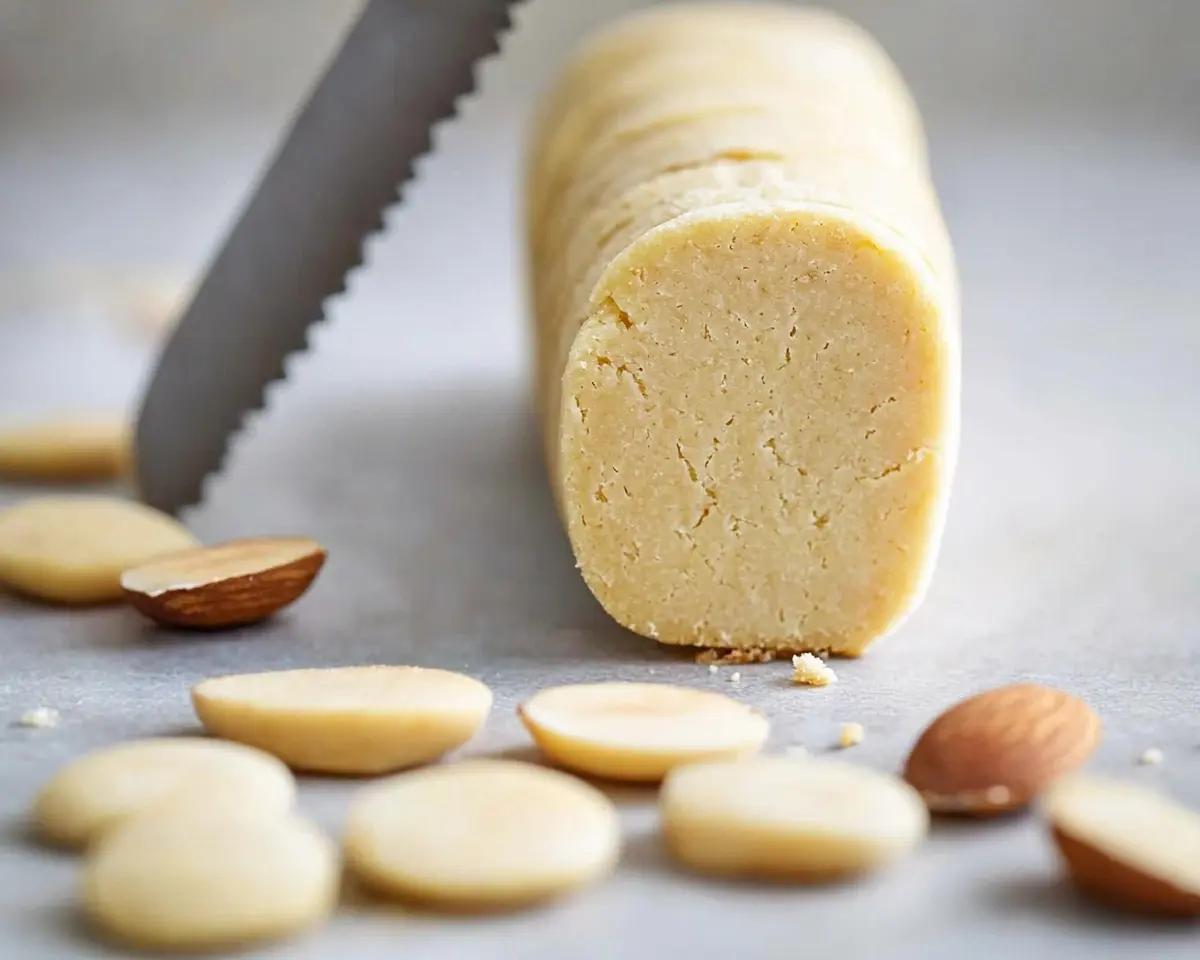Homemade marzipan recipe with just 5 ingredients. Learn professional techniques for perfect almond confection every time.
Hi, I’m Linda, and welcome to Tasty at Home—where bold flavors meet everyday kitchens. Last December, I bit into a piece of homemade marzipan at my neighbor’s holiday party.
Moreover, the buttery almond sweetness transported me straight to a quaint German bakery I’d visited years ago. The texture was like silk against my teeth, simultaneously tender and substantial.
Well, I immediately knew I had to recreate that magical confection. After testing this homemade marzipan recipe fifteen times—and admittedly creating some grainy disasters along the way—I finally nailed the perfect balance. Furthermore, this recipe transforms simple ingredients into pure almond bliss without any fancy equipment.
Whether you’re crafting holiday treats or exploring European confections, this marzipan recipe delivers professional results. Let me tell you, once you taste homemade marzipan, store-bought versions pale in comparison. Additionally, the process itself becomes meditative, kneading that golden dough into submission.
Tasty at Home – Where bold flavors meet everyday kitchens.
Table of Contents
What Makes This Marzipan Recipe Special
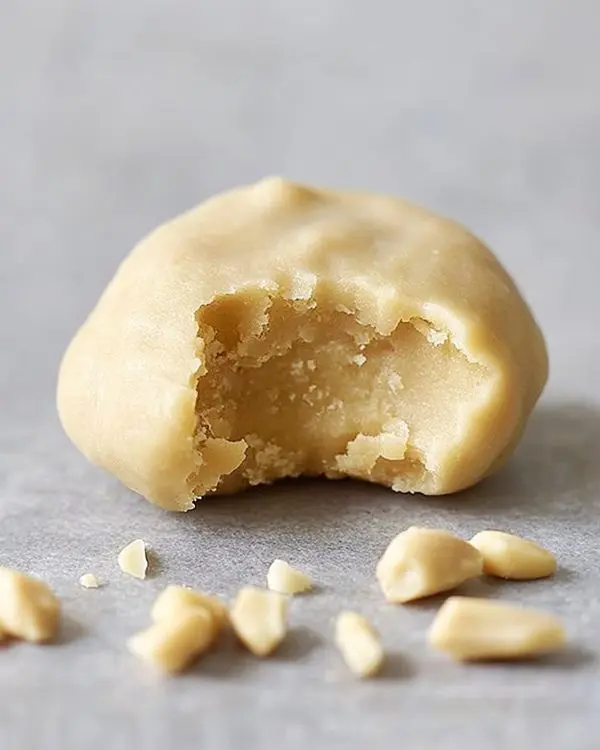
This homemade marzipan recipe stands apart because it achieves bakery-quality results using only five simple ingredients. Unlike commercial versions loaded with preservatives, this best marzipan recipe celebrates pure almond flavor. Moreover, the technique I’ve developed ensures perfect texture every single time.
The secret lies in the precise ratio of almond flour to powdered sugar. Additionally, the optional rose water adds an elegant floral note that elevates this confection beyond ordinary. This marzipan recipe creates a malleable dough that holds its shape beautifully for modeling or rolling.
Essential Ingredients for Perfect Homemade Marzipan
| Ingredient | US Measurement | Metric | Notes |
|---|---|---|---|
| Blanched almond flour | ¾ cup + 1 tbsp | 90g | Super-fine texture preferred |
| Powdered sugar | 9 tbsp | 70g | Or powdered Erythritol |
| Water | 1½ tbsp | 20ml | Or liquid sweetener |
| Almond extract | ¼-½ tsp | Optional | Highly recommended |
| Rose water (food grade) | ½ tsp | Optional | For elegant floral notes |
Shopping Tips for US Grocery Stores
When selecting almond flour for your homemade marzipan, choose blanched varieties for the smoothest texture. Furthermore, most major US chains like Whole Foods and Kroger carry high-quality options in their baking aisles. The finer the grind, the silkier your final marzipan will become.
Powdered sugar should be fresh and lump-free. Additionally, sifting before use prevents grittiness in your finished confection. If you’re using powdered Erythritol as a sugar alternative, process it in a coffee grinder first for optimal smoothness.
Bold Add-ins and Creative Variations
Transform your basic marzipan recipe with these exciting additions:
- Citrus Zest: Orange or lemon for bright Mediterranean flavors
- Cocoa Powder: Create chocolate marzipan for sophisticated treats
- Vanilla Bean Paste: Adds visual speckles and intense vanilla flavor
- Pistachio Extract: For a unique nutty twist
International Substitutions
For readers outside the US, substitute almond flour with finely ground blanched almonds. Similarly, replace powdered sugar with castor sugar processed until fine. Water can be swapped for corn syrup or agave for longer storage life.
Quality Indicators: Selecting the Best Ingredients
Choose almond flour that feels fine and powdery, not coarse or gritty. Moreover, smell should be sweet and nutty without any rancid notes. Fresh powdered sugar flows freely without clumps or moisture.
Food-grade rose water should smell delicate and floral, not perfumy or artificial. Additionally, pure almond extract provides better flavor than artificial versions.
Essential Equipment and Preparation
Creating perfect homemade marzipan requires minimal equipment but maximum technique. You know what? The beauty of this recipe lies in its simplicity. Most home cooks already own everything needed.
Required Equipment
Food Processor: The workhorse of marzipan making. A standard 7-cup model works perfectly for this recipe size. Alternatively, a high-powered blender can substitute, though processing may take longer.
Kitchen Scale: Professional bakers swear by weight measurements for consistent results. Moreover, this ensures your marzipan recipe turns out identical every time.
Clean Work Surface: Marble or granite works best for kneading, though any clean counter suffices. Additionally, the cool surface prevents the marzipan from becoming too soft.
DIY Equipment Alternatives
No food processor? Well, you can create marzipan using a mortar and pestle, though this requires significantly more elbow grease. Similarly, a sturdy mixing bowl and wooden spoon work for small batches, though the texture won’t be as smooth.
For measuring without a scale, use the spoon-and-level method for almond flour. Additionally, sift powdered sugar to ensure accurate measurements and smooth texture.
Step-by-Step Marzipan Making Process
Step 1: Prepare Your Workspace
First, gather all ingredients and ensure they’re at room temperature. Moreover, this prevents the marzipan from becoming too stiff during mixing. Clean your food processor thoroughly to avoid any flavor contamination.
I recommend using a kitchen scale for this recipe, as precision matters significantly. Additionally, having a clean work surface ready streamlines the entire process.
Step 2: Process Dry Ingredients
Add almond flour and powdered sugar to your food processor. Furthermore, pulse several times to combine thoroughly without overheating the mixture. The goal is achieving uniform distribution while maintaining the flour’s fine texture.
Process for 30-45 seconds until the mixture appears completely smooth. However, avoid over-processing, which can release oils and make the mixture too warm.
Step 3: Add Liquid Ingredients
Measure water (or liquid sweetener), almond extract, and rose water precisely. Then, add these liquids to the processor while it’s stopped. Moreover, this prevents splashing and ensures even distribution.
Pulse 2-3 times until the dough begins holding together. Man, oh man, watching that transformation from powder to dough never gets old! The mixture should form a cohesive ball without being sticky.
Step 4: Check Consistency and Adjust
If the dough appears too dry and crumbly, add water one teaspoon at a time. Conversely, if it’s too sticky, incorporate additional almond flour gradually. Furthermore, the perfect consistency feels like soft modeling clay.
The dough should hold together when pressed but not stick to your fingers. Additionally, it should feel smooth and pliable without being wet or greasy.
Step 5: Knead to Perfection
Remove the marzipan ball from the processor and place it on your clean work surface. Then, knead gently for 30 seconds to develop the texture. This step creates the signature smoothness that separates homemade from store-bought versions.
The kneading motion should be gentle and brief. Moreover, excessive handling can make the marzipan oily and difficult to work with.
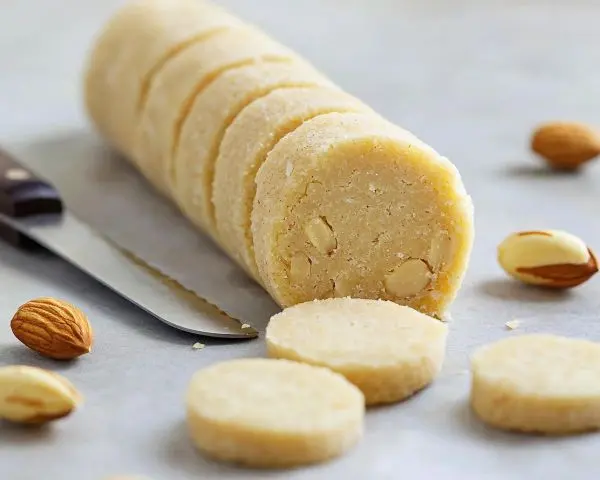
My Biggest Marzipan Mistake (And How to Avoid It)
Last spring, I got impatient and added too much liquid at once, creating a sticky mess that refused to hold its shape. Additionally, I learned that liquid should be added incrementally while pulsing. The lesson? Patience creates perfection in marzipan making.
If you accidentally add too much liquid, don’t panic. Simply incorporate more almond flour gradually until the proper consistency returns. Furthermore, this mistake taught me that marzipan is forgiving with proper technique.
Step 6: Shape and Store
Form the finished marzipan into a log shape for easy portioning. Then, wrap tightly in plastic wrap to prevent drying. Moreover, refrigeration firms the texture beautifully for rolling or molding.
The wrapped marzipan can rest at room temperature for immediate use or be refrigerated for firmer handling. Additionally, the flavors meld and improve over the first 24 hours.
Expert Tips for Marzipan Success
Creating consistently perfect homemade marzipan requires understanding a few professional secrets. Furthermore, these techniques separate amateur attempts from bakery-quality results.
Temperature Control Matters
Keep ingredients at room temperature for optimal blending. Additionally, cold ingredients create lumpy marzipan that’s difficult to smooth. However, avoid working in overly warm kitchens, which can make the mixture oily.
If your kitchen is warm, chill the food processor bowl for 10 minutes before use. Moreover, this prevents the almond oils from releasing too quickly during processing.
Texture Troubleshooting
Grainy marzipan indicates insufficient processing or coarse almond flour. Furthermore, running the mixture longer usually resolves texture issues. However, stop if the mixture becomes warm, as overheating releases oils.
For silky-smooth results, sift both almond flour and powdered sugar before processing. Additionally, this extra step eliminates any lumps that could affect the final texture.
Creative Variations for Every Occasion
Holiday Spice Marzipan: Add pinches of cinnamon, nutmeg, and cardamom for Christmas treats. Moreover, this variation pairs beautifully with eggnog or mulled wine.
Chocolate Chip Marzipan: Fold in mini chocolate chips after kneading. Similarly, cocoa nibs add sophisticated crunch and deep chocolate flavor.
Citrus Celebration: Incorporate lemon or orange zest for bright, refreshing notes. Additionally, these versions complement summer fruit tarts perfectly.
Rose Garden Delight: Double the rose water and add a drop of natural pink coloring. Furthermore, this elegant variation suits wedding celebrations or romantic desserts.
Pistachio Paradise: Replace half the almond flour with finely ground pistachios. Moreover, add a touch of pistachio extract for intensified nutty flavor.
Storage and Make-Ahead Strategies
Proper storage extends your marzipan’s life significantly. Moreover, understanding storage methods ensures you always have this versatile confection ready.
| Storage Method | Duration | Notes |
|---|---|---|
| Room Temperature | 2-3 days | Wrapped tightly in plastic |
| Refrigerated | 2-3 weeks | With agave or corn syrup |
| Refrigerated | 10 days | Made with water only |
| Frozen | 3 months | Double-wrapped in plastic |
For best results, bring refrigerated marzipan to room temperature before using. Additionally, this makes it more pliable for rolling or shaping. Frozen marzipan should thaw completely in the refrigerator overnight.
Serving Suggestions and Pairings
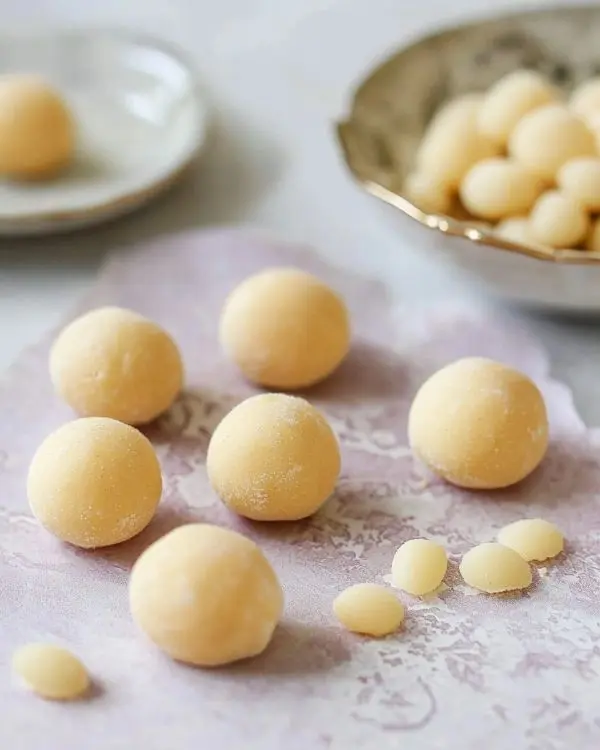
Homemade marzipan shines in countless applications. Furthermore, its versatility makes it invaluable for both simple treats and elaborate desserts.
Classic Presentations: Roll into small balls and dust with cocoa powder or powdered sugar. Moreover, these elegant bites make perfect after-dinner treats or hostess gifts.
Baking Applications: Use as filling for croissants or Danish pastries. Additionally, it creates luxurious centers for chocolate truffles or bonbons.
Holiday Decorations: Mold into festive shapes for cake decorating or cookie toppers. Similarly, food coloring transforms plain marzipan into vibrant decorative elements.
International Inspirations: German stollen traditionally features marzipan centers. Furthermore, Sicilian cassata relies on marzipan for its distinctive almond flavor.
Consider pairing your marzipan with complementary flavors like white chocolate or fresh berries. Moreover, it pairs beautifully with pumpkin-spiced treats during autumn celebrations.
Homemade marzipan FAQs
What are the ingredients for marzipan?
Traditional marzipan contains only blanched almonds, sugar, and sometimes egg whites or corn syrup. However, this homemade marzipan recipe simplifies the process using almond flour, powdered sugar, water, and optional flavorings like almond extract and rose water. The minimal ingredient list ensures pure almond flavor shines through.
Are marzipan and almond paste the same?
No, marzipan and almond paste differ significantly in sugar content and texture. Marzipan contains much more sugar, making it sweeter and more pliable for molding. Conversely, almond paste has less sugar and more intense almond flavor, making it better suited for baking applications. Additionally, marzipan’s higher sugar content allows for decorative work.
What is a good substitute for marzipan?
Almond paste works as the closest substitute, though it’s less sweet and moldable. Furthermore, you can create a quick substitute by mixing equal parts almond butter and powdered sugar with a touch of almond extract. However, the texture won’t match true marzipan’s smoothness. For those avoiding almonds, cashew-based versions provide similar creamy texture.
What is the difference between French marzipan and German marzipan?
German marzipan contains higher almond content (typically 50% or more) and less sugar, creating a more intense almond flavor and denser texture. Moreover, German varieties often include rose water or other floral notes. French marzipan generally contains more sugar and egg whites, resulting in lighter, sweeter confections. Additionally, French versions often feature more elaborate flavoring and coloring.
The Sweet Conclusion
Creating homemade marzipan transforms simple ingredients into European elegance. Moreover, this recipe proves that professional-quality confections don’t require professional training or equipment. The silky texture and pure almond flavor surpass any store-bought alternative.
Oops! I nearly forgot to mention that this marzipan pairs magnificently with a cup of strong coffee or a glass of dessert wine. Furthermore, it makes thoughtful homemade gifts that show real care and effort.
Next time you’re planning a dinner party, consider serving this alongside energy bites for a sophisticated dessert spread. Additionally, the contrast of textures and flavors creates memorable dining experiences.
Whether you’re continuing a family tradition or starting a new one, this marzipan recipe becomes a treasured part of your baking repertoire. Moreover, each batch carries the satisfaction of creating something truly special with your own hands.
Have you tried making homemade marzipan before? I’d love to hear about your variations and creative uses! Share your marzipan masterpieces on social media and tag us to join the conversation.
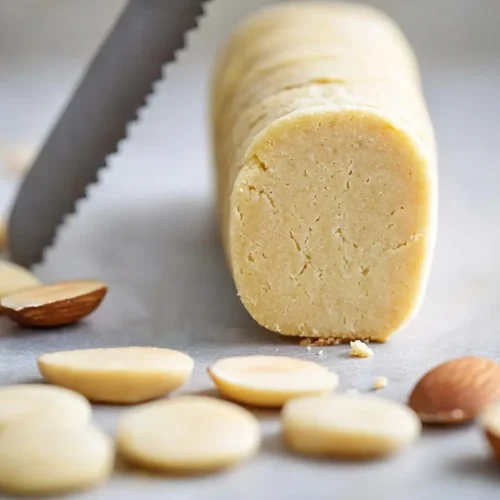
Homemade Marzipan
Equipment
- Food processor
- Kitchen scale
- Clean work surface
Ingredients
Marzipan Dough
- 90 g Blanched almond flour super-fine texture preferred
- 70 g Powdered sugar or powdered erythritol
- 20 ml Water or liquid sweetener
- 1/4-1/2 tsp Almond extract optional but recommended
- ½ tsp Rose water optional, food grade
Instructions
- Gather all ingredients and ensure they are at room temperature. Prepare a clean work surface and food processor.
- Add almond flour and powdered sugar to the food processor. Pulse 30–45 seconds until smooth.
- Add water, almond extract, and rose water. Pulse until mixture forms a cohesive dough.
- If too dry, add water 1 tsp at a time. If too sticky, add almond flour until consistency is like modeling clay.
- Knead gently for 30 seconds on a clean surface until smooth and pliable.
- Shape into a log, wrap tightly in plastic, and refrigerate until ready to use.

